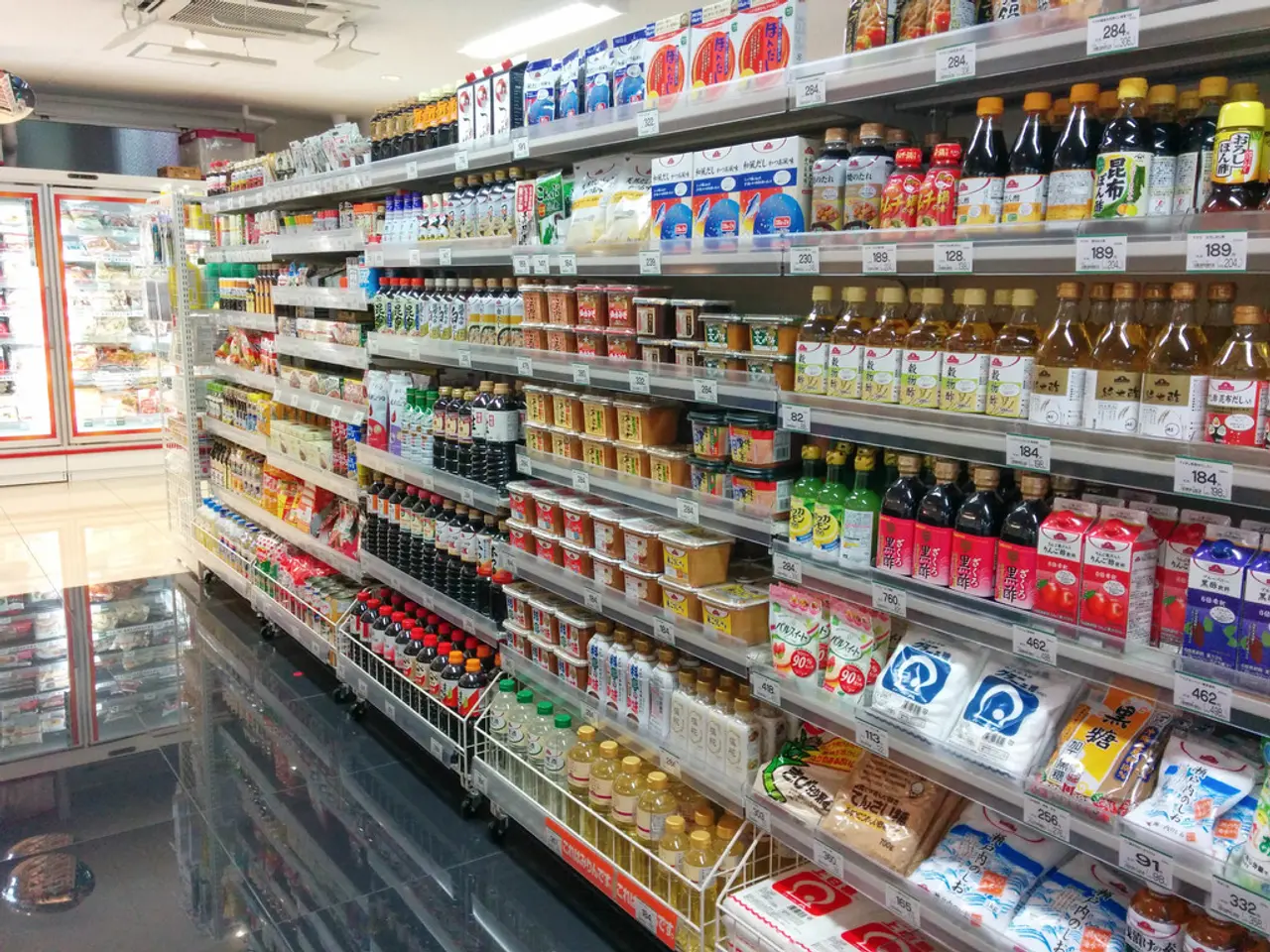Shoppers across America express concern over increasing grocery expenses, prompting adjustments in spending habits
In the past year, grocery prices have risen by 2.4%, causing a significant impact on American consumers [1]. This increase, while slightly slower than the 20-year historical average, has burdened lower-income families disproportionately, who spend a larger portion of their income on groceries [2][4].
The price hikes are attributed to several factors. Economic uncertainty, including slowing GDP growth and concerns about stagflation, combined with tight labor markets and fluctuating energy prices, contribute to upward pressure on food prices [3]. Additionally, tariffs and trade relations have influenced food prices, though the direct impact of tariff policies has been relatively mild so far [3]. However, ongoing tariff tensions and trade uncertainties, particularly with major agricultural suppliers like Mexico and Canada, add to the risk of higher costs in the near future [3].
Climate change and extreme weather events further exacerbate these issues by disrupting food production, leading to price spikes in staple items such as coffee (up 13.4%) and cocoa [2][4]. This adds another layer of unpredictability and inflationary pressure on grocery bills.
As a result, consumers are tightening their budgets and altering their spending habits. They are buying smaller sizes, using coupons, and skipping discretionary items [5]. Consumers are also purchasing only essentials and eating more meals at home [5]. These changes in shopping patterns are a troubling sign and part of an economic slowdown impacting the job market and companies' growth plans [6].
Notably, President Donald Trump, who campaigned on lowering grocery prices during the 2024 race, has seen signs that his tariffs are impacting prices on imported fruits, canned goods, coffee, and other products [7].
In response to the rising prices, American businesses like Kroger are stepping up promotions and expanding their store brands to draw shoppers [8]. Kroger's interim CEO, Ron Sargent, stated that customers are spending cautiously in an uncertain economic environment [8].
The impact of these rising prices extends beyond the grocery store. Consumers pay close attention to store prices and grocery bills shape their overall perceptions of the economy [9]. For instance, companies like Mondelez, the owner of Oreo and Chips Ahoy, have seen a drop in sales in North America due to consumers buying fewer snacks [10]. Dirk van De Put, CEO of Mondelez, mentioned there is consumer anxiety and frustration with inflation [10].
As the economic landscape continues to evolve, it is clear that grocery affordability remains a major concern for households, particularly lower-income families. According to a survey, more than half of Americans say they are stressed about food costs [11]. This stress is reflected in the fact that thirty-three percent of people said they were a "minor" stress, while only 14% said groceries were not a source of stress [11].
In conclusion, the rising cost of groceries in 2025 is causing American consumers to tighten their budgets and alter their spending habits in response to price increases, economic uncertainty, trade tensions, climate change, and extreme weather events. These combined factors create a complex environment in which grocery affordability remains a major concern for households, especially lower-income families.
References: [1] https://www.usda.gov/media/blog/2022/07/14/usda-reports-food-at-home-prices-up-1-1-percent-june [2] https://www.cnbc.com/2022/07/13/inflation-hits-a-40-year-high-as-gas-prices-soar.html [3] https://www.reuters.com/business/us-business/us-food-prices-climb-slightly-june-usda-2022-07-14/ [4] https://www.nytimes.com/2022/07/13/business/economy/inflation-gas-prices.html [5] https://www.usatoday.com/story/money/food/2022/07/13/inflation-impacts-american-shoppers-who-are-changing-spending-habits/10089136002/ [6] https://www.cnbc.com/2022/07/14/us-economy-slows-as-gdp-growth-misses-expectations-in-q2.html [7] https://www.cnn.com/2022/07/14/politics/trump-tariffs-impact-prices-inflation/index.html [8] https://www.reuters.com/business/retail-consumer/kroger-expands-store-brands-draw-shoppers-amid-rising-grocery-prices-2022-07-14/ [9] https://www.nytimes.com/2022/07/13/business/economy/inflation-impacts-american-shoppers-who-are-changing-spending-habits.html [10] https://www.reuters.com/business/retail-consumer/mondelez-sees-drop-sales-north-america-due-to-consumer-anxiety-inflation-2022-07-14/ [11] https://www.usatoday.com/story/money/2022/07/13/inflation-impacts-american-shoppers-who-are-changing-spending-habits/10089136002/
The sudden increase in food-and-drink prices has compelled American businesses like Kroger to enhance their promotions and expand their store brands as a means to attract customers, given the financial constraints faced by consumers [8]. Conversely, companies in the food industry, such as Mondelez, have experienced a decline in sales in North America due to the tightening of consumer budgets and the reduction of discretionary spending on food-and-drink items [10].






